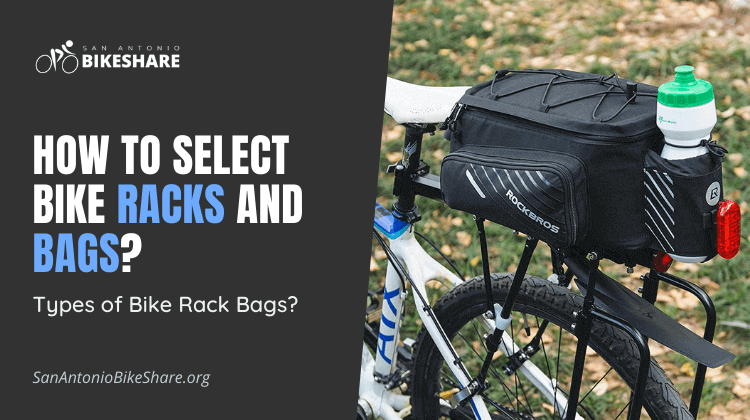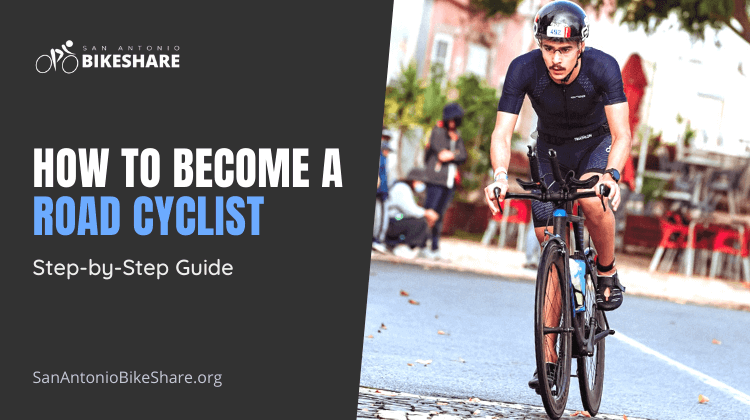How To Select Bike Racks And Bags? Types of Bike Rack Bags?
Are you wondering how to select bike racks and bags? Let’s start to learn choosing the right bike racks and bags.
Bike touring and bike packing, as well as regular commuting, demand the use of bike bags or pannier racks to haul gear. The majority of cyclists, on the other hand, are completely unaware of them. While a bicycle does not offer the convenience of being able to transport large amounts of luggage, it is possible with the correct gear.
Most riders are undoubtedly familiar with messenger bags and biking backpacks. They make it simple to transfer a few items across short distances. You’ll need to attach a bike rack and bag if you need to transport additional items or go on longer bike rides.
The issue is that most consumers have no knowledge of how to select an appropriate bike bag or rack. Furthermore, there are so many different types of racks that choosing the right one for your bike might be challenging.
Continue reading to learn how to select bike racks and bags.
Choosing the Right Bike Rack
How to select bike racks and bags? Let’s dig into this question.
It’s not difficult to select a bike rack bag or pannier. You must, however, be aware of which racks are best for specific bikes and situations. This information is crucial because certain racks will either not function with your bike or will radically alter its riding characteristics. Understanding the many types of racks is, without a doubt, the first step in picking one.
The three types of universal racks used to transfer objects on a bike are bike trailers, rear racks, and front racks.
Let’s have a look at the various types of bike trailers:
Bike Trailers
A bike trailer is a bike attachment that attaches to the rear hub. They’re perfect for moving a huge quantity of items. They do, however, necessitate some practice before you start commuting for long periods of time.
If you have a lot of heavy gear or other items to transport, a bike trailer is a must-have. Bike trailers are preferred by many riders over racks or panniers because they allow weight to be carried off rather than on the bike, which can affect their riding.
Front Racks
A front rack is standard equipment on several commuter bikes. For bike packing and bike touring, which are usually done on specially manufactured bikes, a front rack allows a rider to haul extra gear to the front of their bike.
Front racks are typically left unused until there is a need to carry a lot of extra things that won’t fit on the rear racks. This is because adding weight to your bike’s front rack and carrying weights on it can hinder your ability to turn the bike.
The two most frequent types of front racks seen on touring bikes are the traditional Rack and low rider racks.
A traditional front rack extends over the front wheel and can be used to load things. A low rider rack, on the other hand, distributes the weight of bike bags evenly across the fork’s sides. Because they are situated near the wheel’s center, low rider racks also provide better weight distribution than a standard front rack.
Rear Racks
Rear racks are commonly used for backpacking, commuting, and bike touring. Because they do not obstruct your ability to ride your bike, these racks are preferred to front racks and bike trailers. With a rear rack or seat post rack, you can utilize various containers such as panniers, bags, or bike rack trunks.
Depending on the design of the rack, rear racks may often hold up to 80 pounds of cargo. However, not all bikes can be fitted with rear racks, so in those cases, you’ll have to settle for seat post bike racks.
What Are the Finest Types of Bike Rack Bags?
The following step is to choose the right container for your bike rack. A bicycle rack can be used to carry a wide range of items. Some of the alternatives include baskets, saddle packs, panniers, Rack Trunks, frame bags, and handlebar packs.
Bike Baskets
Bike baskets are ideal for carrying a small number of objects. Typically, these baskets are mounted to the front or back of your bike. If you don’t have a bike rack, there are a few bike baskets that can be attached without one. Bicycle baskets’ only drawback is that they have a lower weight restriction, usually about 20 pounds, with heavy-duty models permitting up to 40 pounds in exceptional circumstances. However, because most of them are lidless, they offer the advantage of being able to transport heavier items or a pet.
Saddle Packs
As the name implies, a saddle pack is a bag that sits just beneath the saddle or seat of your bike. These bags are little containers that allow you to simply bring a few essential items with you.
Panniers
These bags are made for long backpacking or bike tours where you’ll need to transport your daily necessities. They usually come in pairs and have ample storage space to accommodate a significant amount of clothing and other essentials. You’ll frequently come across a wide variety of panniers in a variety of sizes and forms. In addition, the best bike panniers are often waterproof.
Panniers are also quite portable due to their ability to quickly attach and detach from the bike’s side. As a result, you can use them to move items that need to be accessed quickly.
Rack Trunks
Rack Trunks are bicycle bags’ suitcases. They sit on top of the back bike rack and have more storage space than a regular seat bag. Rack trunks, on the other hand, rarely hold the same amount of luggage as a pannier.
Rack trunks, on the other hand, are a great addition to any backpacking or bike trip. You may put all of your possessions in them without fear of them being destroyed because they usually have a robust base.
Handlebar Packs
This is arguably the tiniest of the bike bags available. They clip to the handlebar of your bike and are great for carrying tools, phones, repellents, and other items that need to be accessed fast.
Frames Bags
Tools, wallets, keys, and other essentials fit perfectly in bike frame bags. They are usually triangular in shape and are neatly positioned between the frame tubes.
Choosing The Right Fit
As with any other item of gear, the fit will vary depending on the type of bike and the size of the bag you purchase. As a result, you must constantly ensure that the bags you choose will fit in the places where they are needed. For example, unless you use a Seatpost bike rack, you won’t be able to use a rack trunk if you don’t have the ability to mount a rack to the rear of your bike. In situations where you need to move large items, a bike basket isn’t the ideal choice.
Accessibility And Portability
The bulk of bike bag options is portable. However, some are substantially more portable than others, like panniers. Others are concealed or out of reach, making them inaccessible. As a result, we suggest compiling a list of the items you plan to take in these bags. If you keep this in mind, you’ll be able to figure out what to bring and where to store it. A-frame bag is perfect for holding phones, energy snacks, or a water bottle. A bike rack trunk or seat bag is a great way to transport tools. If you only need to carry a small amount of gear or food, a handlebar bag is a great solution.
Features
Finally, pay attention to the characteristics of your bike bags. Some bike bags come with multiple pockets and are water-resistant or waterproof. There are bags with different weight limits and even bags with a recharge pack. Because there are so many options, the easiest way to buy a bike bag and rack is to know which bag is suitable for your riding condition.
We’ve come to the end of the guide, and you should now have a better idea of which bag and Rack will work best for you. Pay close attention to the specifics of the bags you select and ensure that they are suitable for the purpose for which you intend to use them. Keep in mind that improper bag placement and weight distribution can have a major impact on your rides.
Conclusion
Hopefully, you would have gotten the answer to the question: How to select bike racks and bags? If you still have any queries, read the article again in case you have missed something.







